Analysis of Childhood Development Through Bronfenbrenner's Framework
VerifiedAdded on 2021/12/27
|5
|967
|212
Essay
AI Summary
This essay delves into Bronfenbrenner's ecological systems theory, exploring how various environmental systems influence childhood development. It examines the five key systems: microsystem, mesosystem, exosystem, macrosystem, and chronosystem, providing examples of how each system impacts a child's behavior and growth. The essay discusses the interconnectedness of these systems, highlighting the role of family, school, culture, and socioeconomic factors. By analyzing these different environments, the essay emphasizes the importance of a balanced approach to ensure optimal child development. References from Bronfenbrenner, Burns, Hope, Pittenger, Sallis and Tudge are provided to support the discussion. The essay concludes by reinforcing the significance of environmental factors in shaping a child's overall development. This essay provides a comprehensive overview of the ecological model and its practical implications, providing valuable insights into child psychology and development. This is a great resource for students, and more like it can be found on Desklib.
1 out of 5
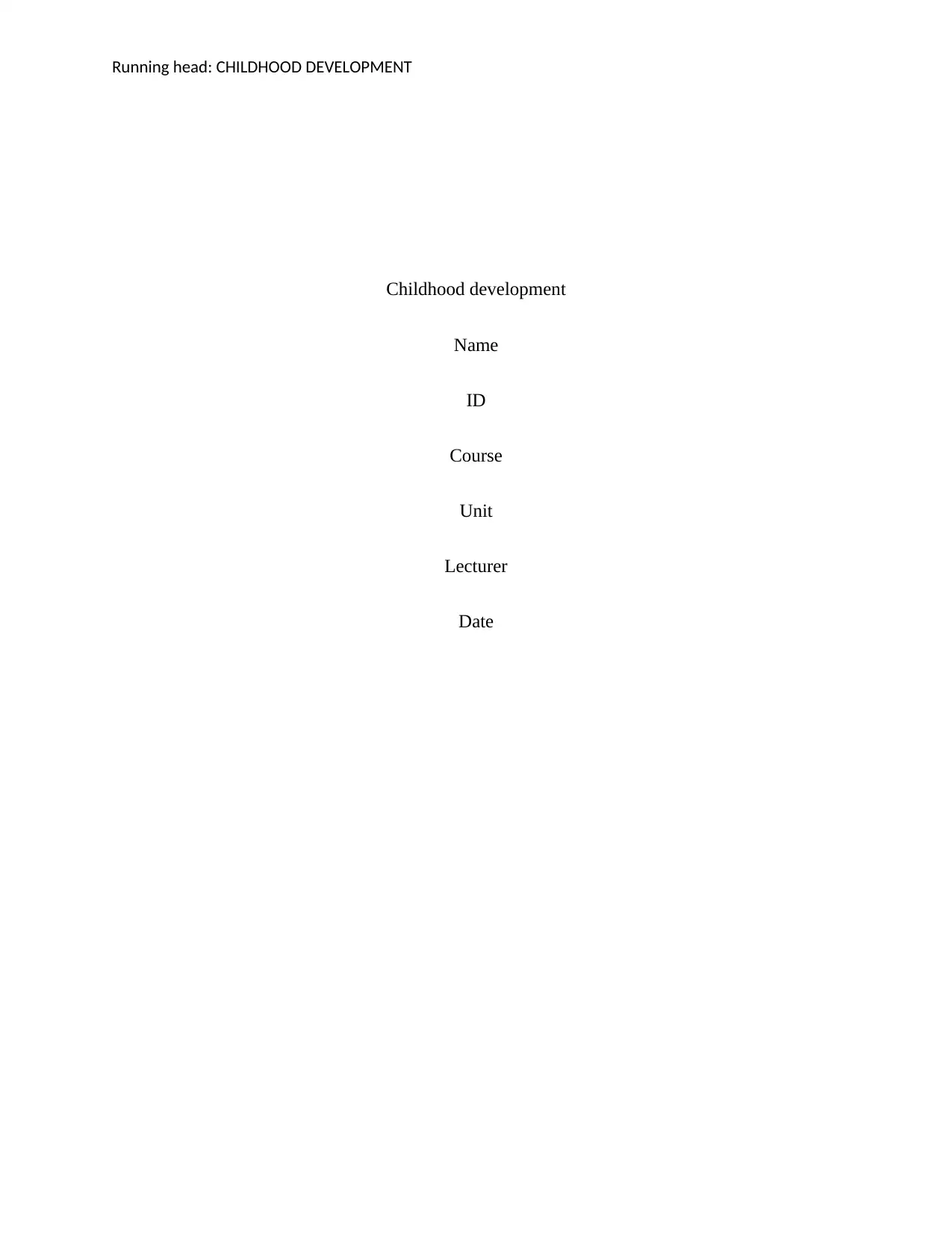
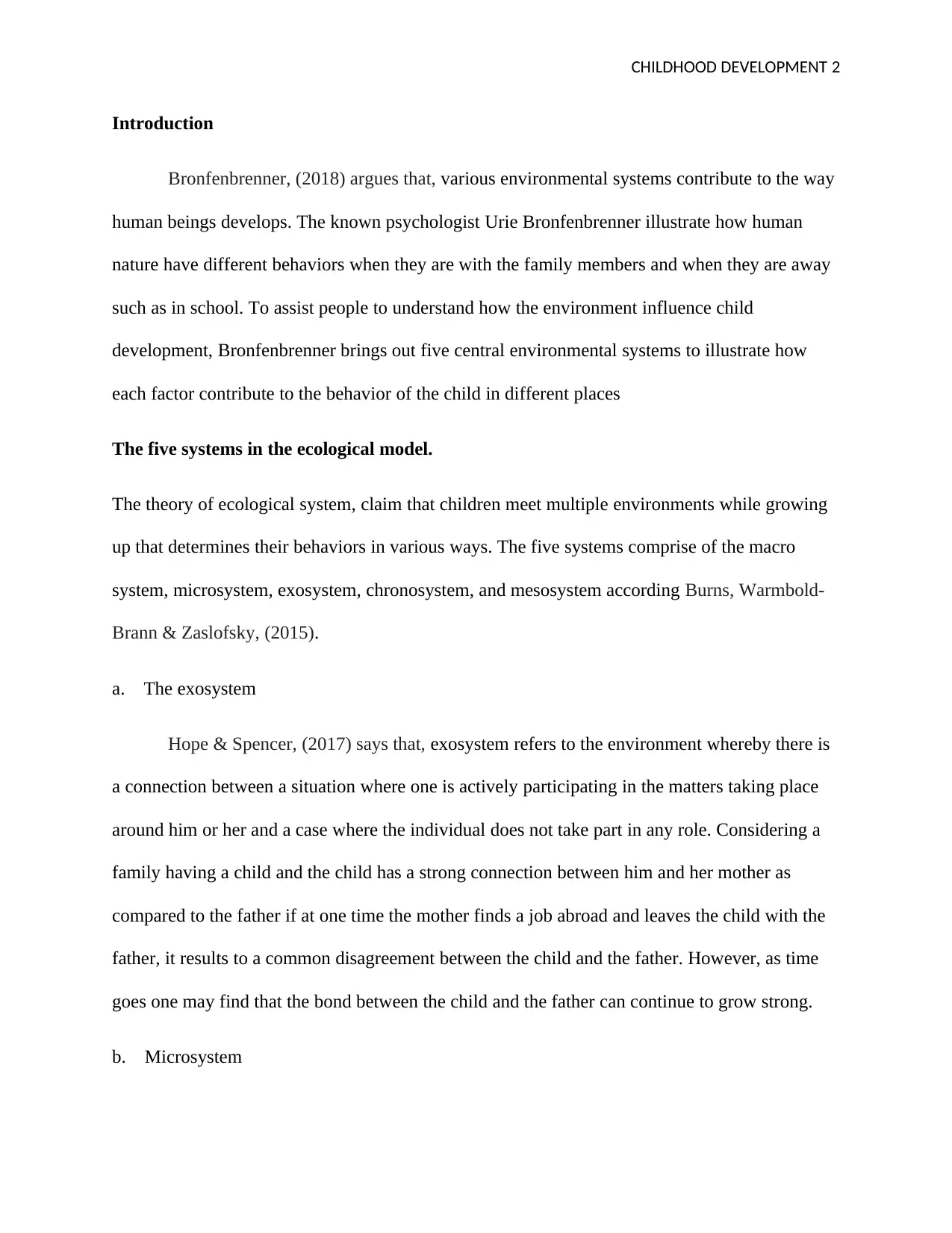
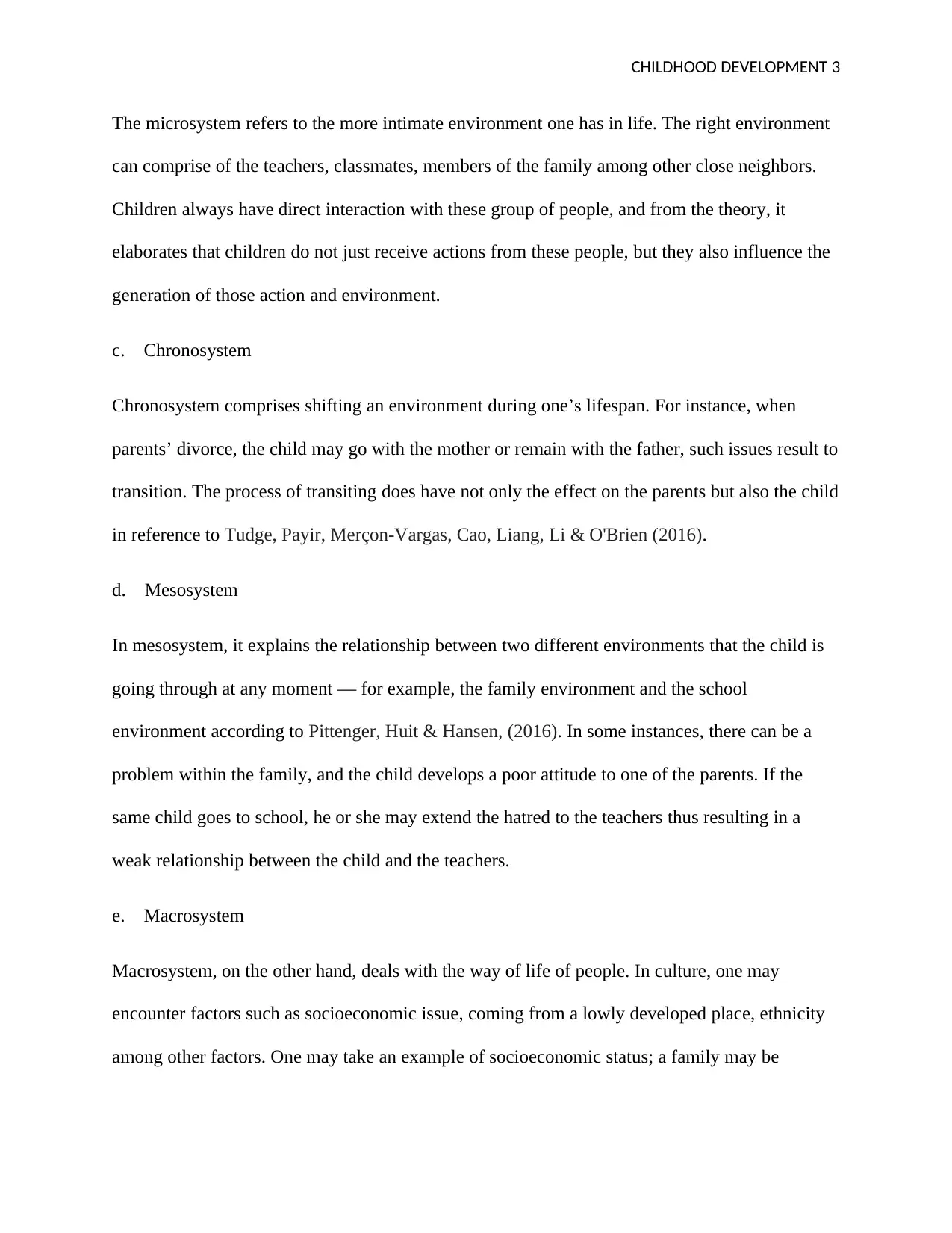

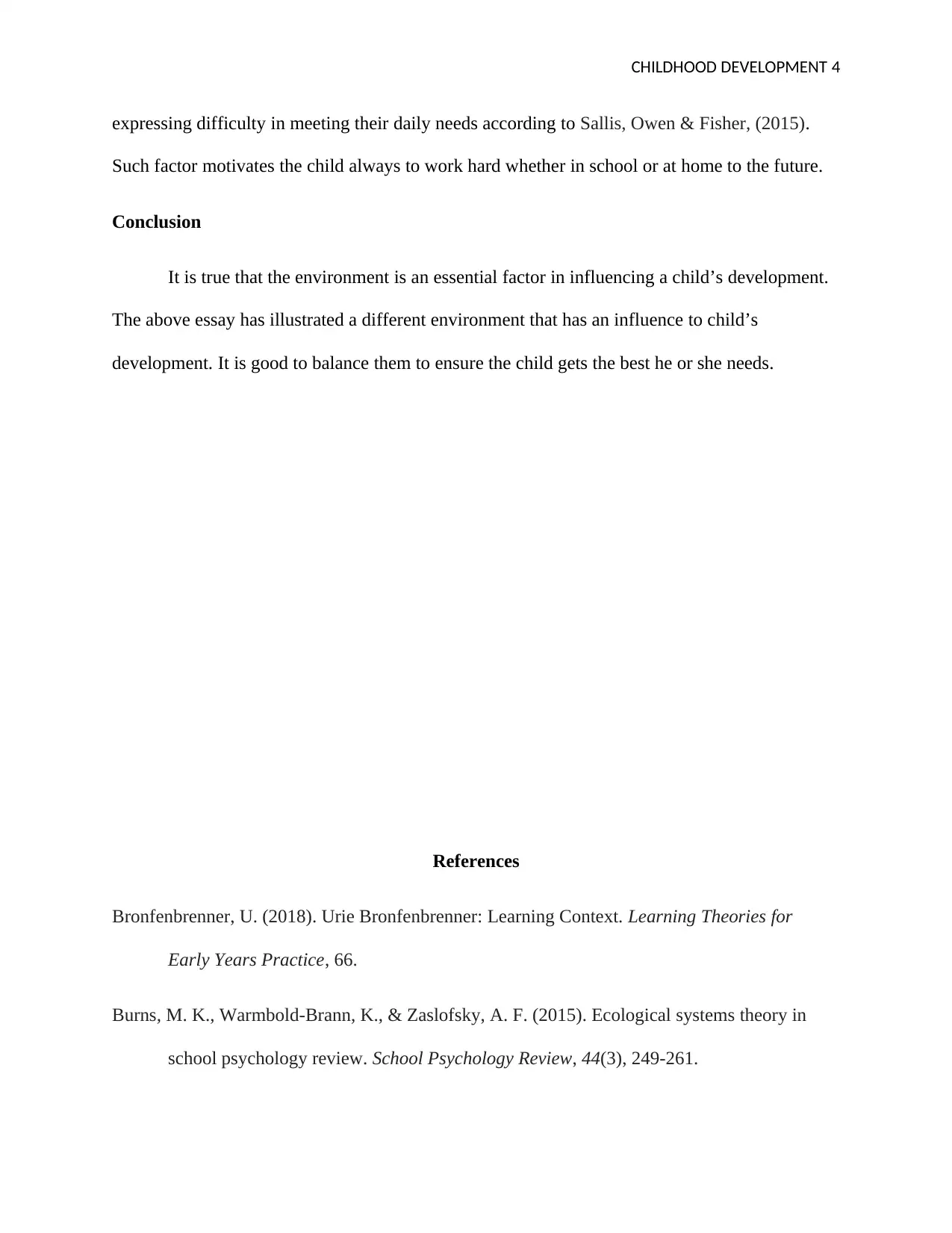
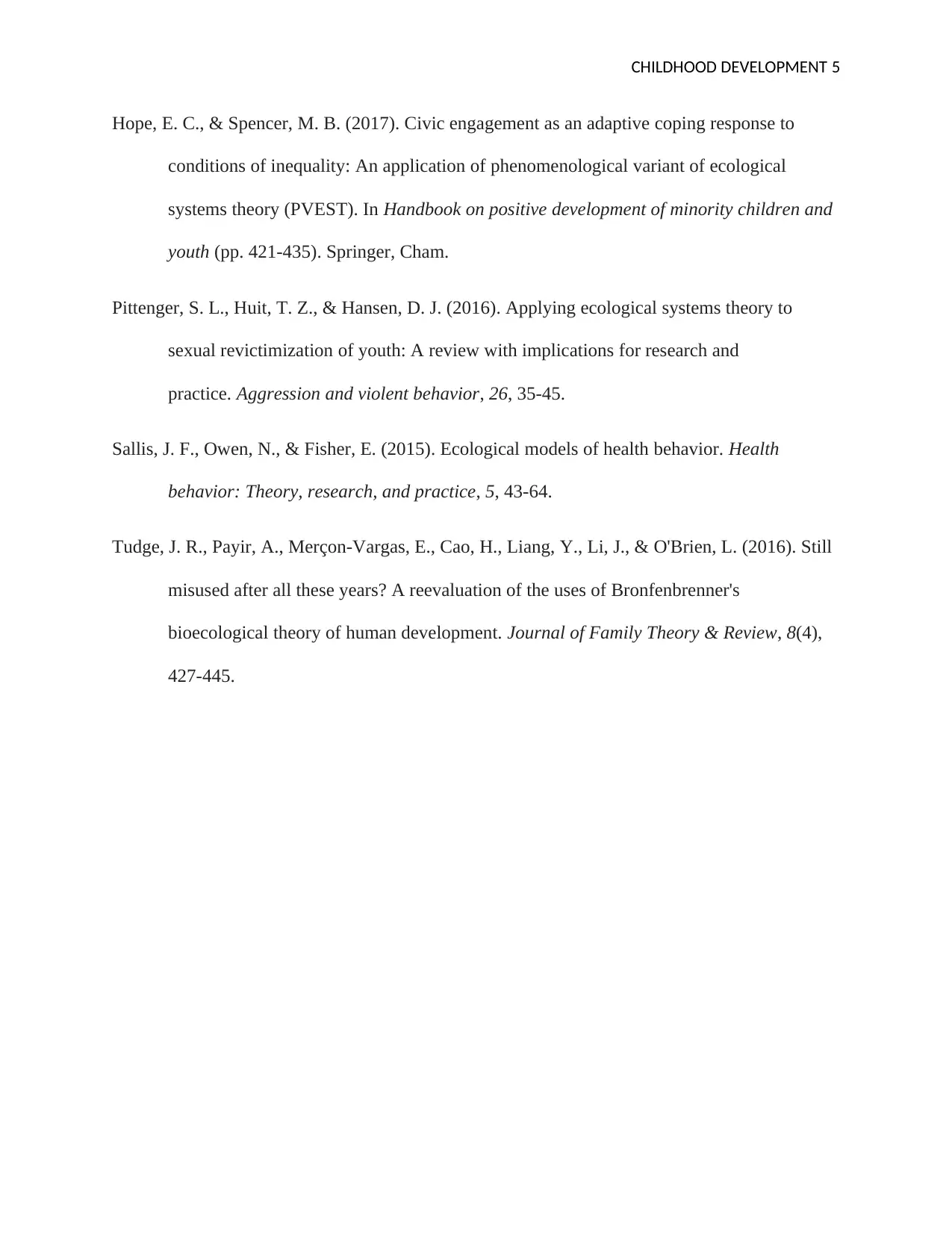

![Ecological Systems Theory and Child Development Essay, [University]](/_next/image/?url=https%3A%2F%2Fdesklib.com%2Fmedia%2Fimages%2Fzr%2Ff9a594fb207243969d0a32ecfd8ad4a4.jpg&w=256&q=75)




![[object Object]](/_next/static/media/star-bottom.7253800d.svg)